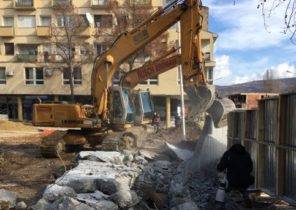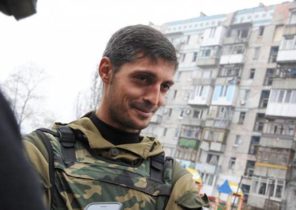
Who often lies, to no longer believe. So the German press can write anything about the destruction of the Basque town Guernica by German and Italian bombs on 26 April 1937. When propaganda Minister Joseph Goebbels gave the instruction to start the disinformation campaign, opponents of Hitler embraced the approval of the German Newspapers as an indirect confirmation.
In the weeks that followed, Pablo Picasso (Pablo Picasso) created his famous painting of the same name. The impression that the bombing of the Holy city of the Basque (in Basque is spelled Gernika, in Spanish Guernica) was a prediction of future bombing, confirmed later after the German RAID on the Polish city Vilun September 1, 1939, and Warsaw in the coming days. And today, people around the world associate with this name the first war crime of the Third Reich, which killed 200 to 300 people, and the whole city was burned to the ground.
But what really happened that Monday in a small town in the North-East of Spain? The result of archival research by historians has made possible a remarkably accurate reconstruction of the incident.
Already in 1977, Klaus A. Maier (Klaus A. Maier), an employee of the then military-historical Bureau of the Bundeswehr, concluded that Guernica, in contrast to the statements of the disinformation campaign of Goebbels, “was destroyed solely as a result of the airstrike, on 26 April 1937”. The assertion that the city was set on fire by supporters of the popular front, fleeing from the troops of Franco (Franco), was pure fiction.
Similarly, it is not in doubt the data about who participated in the RAID: 28 German aircraft of the Legion Condor, one aircraft of the type Dornier Do-17 and 27 bomber versions of the aircraft Ju-52 Junkers company, and three Italian plane. In addition, the operation involved approximately two dozen escort fighters.
Shortly before half past four of the afternoon bells rang Guernica. The alarm did not pay attention, because for the first nine months of the civil war it happened often, even though it had no reason not to. However, in the beginning appeared in the sky one plane, it was a Do-17, he dropped a few bombs that exploded in city center. It was shopping day, people in a panic ran to hide in cellars.
After that, all hell broke loose. Around 16.45 for Dornier was followed by three Italian bombers and 17.15 three waves ran 27 Junkers. In total, according to the German lists of combat boot, the city had dropped 22 tons of mostly high-explosive bombs and a small part of incendiary bombs. Another two tons was thrown by three Italian aircraft.
The official purpose of the RAID was strategically important bridge across the Oka river, connecting the Central part of Guernica with its Eastern quarter, evidenced by the results of studies Mayer and his colleagues, in particular Hans-Henning Abendroth (Hans-Henning Abendroth) or Booga Horst (Horst Boog).
According to the personal diary of the chief of staff of the Legion Kondor Lieutenant Tungsten Freiherr background Richthofen (Wolfram Freiherr von Richthofen), in the order it was ordered “to strike a severe blow on the streets and the bridge (including the suburbs), so in an important area of movement to change the direction of the Republican retreat of the enemy westward in the direction of Bilbao. The overlap of this path of movement should lead to successful action against the personnel and technical resources of the enemy,” wrote Richthofen.
The bridge of Guernica was a length of 25 meters and a width of ten. Small goal, but the path of retreat of the enemy troops is absolutely legitimate from the point of view of military operations. However, if you do not take into account that the participation of German and Italian units in the Spanish civil war was totally illegal and, therefore, each of their actions was a violation of international law.
“Aunt Ju”, the legendary plane
But flying horizontal bombers was completely unable to get exactly this purpose free-fall bombs, for such operations had the most modern aircraft of the era dive bombers. But the Legion “Condor” at the end of April 1937 could not be composed of the frightful dive bombers of the type Junkers Ju-87, though you can still find materials that contain absolutely opposite data.
“The total number of used bombs, including incendiary, is part of the usual RAID on the bridges,” concludes military historian Rolf-Dieter Mueller (Rolf-Dieter Müller) in his work “the Bomb war 1939-1945”. However, that doesn’t change the fact that their use is in principle unacceptable, and the conduct of business and sound analysis instead of speech, with naturally the moral and legal condemnation.
If we consider only the brutal facts, Guernica 26 April 1937, under the existing at the time military law was not “undefended city”, as found by the expert on military international law Marcus Hanke (Hanke Marcus). According to the Hague Convention respecting the laws and customs of war on land of 1907, “unprotected” is only such a settlement which actively demonstrates their surrender to the advancing enemy, sending it to Parliament or clearly showing the white flag.
The Spanish civil war (1936-1939)
If such was not done, it is possible to lose the status of “undefended towns” and thus become a legitimate target, even if the village does not have any parts or any preparations for defense.
But the question arises, did the inhabitants of Guernica that they had to clearly show their surrender. Jota rules of the Convention concerning the laws and customs of war on land generally are not observed in civil wars, in which simply no legitimate rules and customs.
Therefore, experts in military and international law historians are quite right when you stress that the RAID on Guernica was close to breaching the legally permissible framework, however, was within these limits. This was also emphasized by then-President Roman Herzog (Roman Herzog), which in 1997 in connection with the sixtieth anniversary sent the then living witnesses of the airstrike “a Message of remembrance, sympathy and grief.”
Those who are seriously engaged in war crimes in modern history, should keep in mind about it. But for the innocent victims of the criminal war it is irrelevant.







